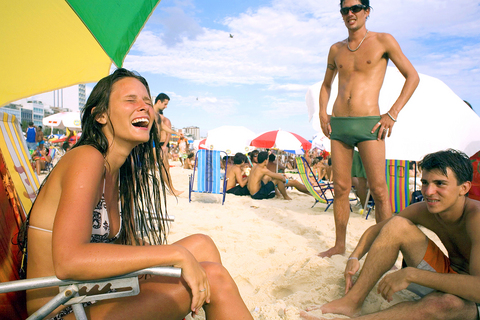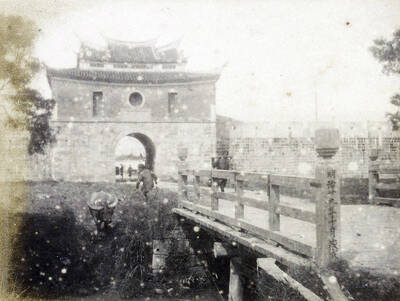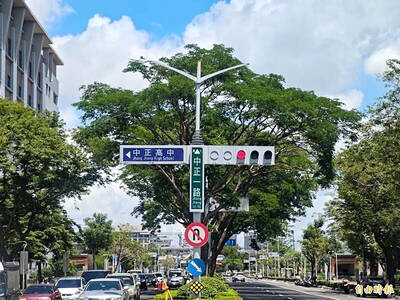Brazilians like to say that the beach is their country's "most democratic space." But some bodies — and some beaches — are more equal than others.
In the Brazilian imagination, the beach has traditionally been regarded as the great leveler, "the place where the general, the teacher, the politician, the millionaire and the poor student" were all equal, said Roberto da Matta, an anthropologist and newspaper columnist who is a leading social commentator. "Their bodies were all made equally humble," he said, by the near-naked proximity of "one body with others, all of them without defense or disguise."
But here in Brazil's postcard city, where the summer vacation season is in full swing, the hierarchy, in which both class and skin color play a part, is clear to all. The beaches facing the ocean in elite neighborhoods on the south side and those who frequent them rank higher than those on the north side, fronting the polluted Guanabara Bay.

PHOTO: NY TIMES NEWS SERVICE
In Rio, 59 beaches spread out along 177km of sand. Even the city's most elite beaches, Ipanema and Copacabana, and their lesser-known extensions, Leblon and Leme, are informally subdivided into sectors, demarcated by a dozen lifeguard stations called postos, each about 800m from the next. Each posto, numbered one to 12, has a culture of its own, appeals to a different "tribe" and can be inhospitable to interlopers.
Brazil has nearly 8,000km of tropical coastline, and "by law, the beach is always public property and never private," said Patricia Farias, author of Grabbing Some Color at the Beach, a study of race relations on Rio's beaches. "The discourse is always one of, 'We all live together democratically,' but the second, unspoken part of that is 'but it has to be by my rules."'
In Rio, Posto 9 is clearly at the top of the heap, and has been for more than 30 years. It is favored by left-wing intellectuals, who fly the flag of the governing Workers' Party there, as well as by entertainers and former hippies.
The area between Postos 11 and 12 in Leblon is the redoubt of upper-middle-class mothers and their small children. That phenomenon emerged about 20 years ago, when a sidewalk kiosk selling coconuts and drinks installed a diaper-changing station and a small playground in hopes of seeing business grow.
"Ipanema is always in the vanguard, but Leblon has more of a family vibe," Joao Fontes of the Leblon community association said when asked to compare the two beaches, which are separated by only a narrow canal. "We'd rather be quiet and unassuming than to brag."
At the other end of Ipanema, Posto 7 is a favorite gathering spot for surfers from the neighborhood. But it also draws outsiders, many of them dark-skinned, from working-class suburbs up to a three-hour bus ride away, especially on weekends, when entire families station themselves on the sand.
The bulk of these suburban bus passengers choose to get off at the first bus stops in Ipanema, near Posto 7. The outsiders are known pejoratively as farofeiros, because they are said to prefer to bring picnic lunches that include farofa, a dish made of toasted flour. They are also the butt of gibes because they sit on drab straw mats rather than colorful cloth towels and apply a cheap red tanning lotion instead of buying more expensive sunscreens.
“Most people treat you OK, but some are really prejudiced, even racist,” said Jefferson Luiz Santos Fonseca, 27, who occasionally goes to Ipanema on summer weekends with his wife and children.
Among themselves, Brazilians often criticize their society as one in which selective disobedience of laws and rules is generalized, in ways small and large. Cars routinely run red lights and park on sidewalks, and protected forests are felled for their timber or occupied by squatters.
In many respects, the beach is no different. Paddleball players at water's edge, dog owners playing fetch with their pets and surfers who threaten to run over swimmers all routinely flout restrictions on their activities, “and nobody does a thing about it, not the municipal guard and certainly not the defenseless sunbather,” complained Joana Guimaraes, the mother of two small children.
That is not to say there are no limits on behavior. Despite Brazil's reputation for sexual tolerance, both the toplessness and nudity increasingly seen on European beaches are frowned upon here. When a group of young women tried going topless in Ipanema a few years ago, people poured beer on them, insulted them and called the police.
But what really worries beachgoers are the “sweeps” in which large groups of young men from the favelas, or squatter slums in the hills overlooking the beach, raid the shore and rob beachgoers. That began in the early 1990s, and, though it has diminished in recent years as the police have responded, it lingers as a source of unease with a clearly racial component.
“If you're sitting there with your wife and kids, your watch and your money hidden in an obvious place, and a group of dark-skinned teenagers with that died blond hair come by, you start to get nervous,” said Antonio Bezerra Andrade, an Ipanema resident.
Some luxury beachfront hotels have in recent years equipped security guards with binoculars, to watch from their upper floors and communicate by walkie-talkie to colleagues on the beach. They also try to shoo away the freelance prostitutes, known in some parts of Brazil as “Cinderellas of the sand.”
Still, “what amazes me is that in a society that represents itself as being so highly disorganized, the beach is astonishingly organized,” da Matta said. But order, and the comforts that go with it, could not be maintained without the presence of what can only be described as a servant class.
Up and down the beach, beachgoers are served by strolling vendors who have made the long commute from the working-class suburbs to sell wares like soft drinks, ice cream, sunglasses, clothes and tanning lotion.
“Sometimes you get these groups of really hot upper-class babes putting down their boyfriends or talking about their sex lives right in front of you,” said one vendor, who asked not to be identified because he feared offending regular clients. “It's like you're not even there, like you're invisible or not a person.”
Many of Brazil's cultural and social trends and movements are born in Rio, with the beach serving as their stage. When, in the early 1970s, for example, the actress Leila Diniz wore a skimpy bikini to Posto 9 while gloriously pregnant and unmarried, traditionalists were horrified. But feminists point to the episode as a galvanizing moment in their efforts to gain equal rights.
A few years later, with a military dictatorship still in power, Fernando Gabeira, today a writer and a prominent member of Congress representing the Green Party, returned from exile in Europe and signaled his generation's split from the Stalinist left by wearing the briefest of crocheted trunks to the beach.
More recently, gays have staked out an area near Posto 9, which now flies the rainbow flag that is the emblem of their movement.
“Why, after years in which homosexuals congregated discreetly near the Copacabana Palace Hotel, do you all of a sudden have a gay beach at Farme de Amoedo Street?” Farias, the author, said. “It's because groups use the beach to acquire visibility, to say ‘Hey, I'm here, too.’ In order to do that, they need a spot on the beach that they can say is theirs.”

June 9 to June 15 A photo of two men riding trendy high-wheel Penny-Farthing bicycles past a Qing Dynasty gate aptly captures the essence of Taipei in 1897 — a newly colonized city on the cusp of great change. The Japanese began making significant modifications to the cityscape in 1899, tearing down Qing-era structures, widening boulevards and installing Western-style infrastructure and buildings. The photographer, Minosuke Imamura, only spent a year in Taiwan as a cartographer for the governor-general’s office, but he left behind a treasure trove of 130 images showing life at the onset of Japanese rule, spanning July 1897 to

One of the most important gripes that Taiwanese have about the Democratic Progressive Party (DPP) is that it has failed to deliver concretely on higher wages, housing prices and other bread-and-butter issues. The parallel complaint is that the DPP cares only about glamor issues, such as removing markers of Chinese Nationalist Party (KMT) colonialism by renaming them, or what the KMT codes as “de-Sinification.” Once again, as a critical election looms, the DPP is presenting evidence for that charge. The KMT was quick to jump on the recent proposal of the Ministry of the Interior (MOI) to rename roads that symbolize

In an interview posted online by United Daily News (UDN) on May 26, current Chinese Nationalist Party (KMT) Chairman Eric Chu (朱立倫) was asked about Taichung Mayor Lu Shiow-yen (盧秀燕) replacing him as party chair. Though not yet officially running, by the customs of Taiwan politics, Lu has been signalling she is both running for party chair and to be the party’s 2028 presidential candidate. She told an international media outlet that she was considering a run. She also gave a speech in Keelung on national priorities and foreign affairs. For details, see the May 23 edition of this column,

On the evening of June 1, Control Yuan Secretary-General Lee Chun-yi (李俊俋) apologized and resigned in disgrace. His crime was instructing his driver to use a Control Yuan vehicle to transport his dog to a pet grooming salon. The Control Yuan is the government branch that investigates, audits and impeaches government officials for, among other things, misuse of government funds, so his misuse of a government vehicle was highly inappropriate. If this story were told to anyone living in the golden era of swaggering gangsters, flashy nouveau riche businessmen, and corrupt “black gold” politics of the 1980s and 1990s, they would have laughed.